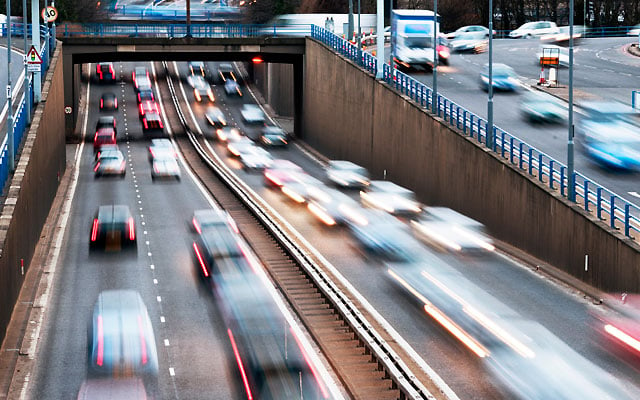Careless driving is more than just bad habits or irritating drivers. It’s when someone’s driving falls below what’s expected of a competent and careful driver and instead they drive without due care and attention.
Find out what counts as an offence of careless driving and what the maximum penalties are.

In this article |
What is careless driving?
According to the jargon in the Road Traffic Act 1988, you’re guilty of a careless driving offence if you drive a mechanically propelled vehicle on a road or other public place without due care and attention, or without reasonable consideration for other persons using the road or place.
- Driving without due care and attention means driving in a way that falls below what would be expected of a competent and careful driver.
- Driving without reasonable consideration for other persons means they are inconvenienced by your driving.
What counts as careless driving?
There’s no standard list of behaviours or poor manoeuvres but any minor breach of the Highway Code could be considered to be an offence:
- Tailgating
- Not giving way at a junction
- Overtaking and forcing your way into a queue of traffic
- Using the wrong lane at a roundabout
- Ignoring a lane closed sign and forcing your way into an orderly queue
- Lane hogging
- Inappropriate speed
- Overtaking on the inside
- Wheel spins
- Hand brake turns
- Operating a satnav or reading a map while driving
- Eating or drinking at the wheel
- Lane hopping or weaving
- Overtaking and causing an approaching vehicle or overtaken vehicle to brake
- Smoking and driving
Other offences
Our list doesn’t cover everything that could be considered careless.
The Road Traffic Act states that “a person is to be regarded as driving without due care and attention if (and only if) the way he drives falls below what would be expected of a competent and careful driver."
What’s the difference between careless and dangerous driving?
Dangerous driving is similar to careless driving but it's more serious. It's when driving falls far below, rather than just below, what would be expected of a competent and careful driver.
While careless driving includes situations that inconvenience other drivers, dangerous driving includes situations where other road users are at risk of harm.
It can include the danger of injuring someone or of seriously damaging property.
What are the penalties for careless driving?
You can expect a Fixed Penalty Notice for many careless driving offences but in more serious cases you’ll be summoned to appear in court.
- The more serious offence of dangerous driving will always be dealt with by a court appearance.
- If a case goes to court the maximum penalty is now an unlimited fine set by the court, 3 to 9 points on your licence and a discretionary disqualification.
- National Police Chiefs' Council (NPCC) guidance is that lower level careless driving offences are considered for a fixed penalty with the offender being offered driver education in most cases.
There are 5 different ways that the police can deal with a careless driving offence depending on the severity and circumstances:
| Outcome | Penalty |
|---|---|
| A warning |
|
| Fixed penalty with an offer of educational training |
If you refuse or fail to complete the course and don't accept the penalty, you’ll be summonsed. You can then either plead guilty and accept the court fine or not guilty and have the case heard in the Magistrates Court. |
| Fixed penalty |
|
| Summons |
|
| Summons with an offer of educational training |
|
Will I be offered a training course instead of a penalty?
Fixed penalty and/or educational training can be offered in situations of officer-observed, low level careless, aggressive and inconsiderate driving where other drivers are not unduly affected.
The officer at the roadside can’t himself offer a course. Back office staff will consider the case and check the National Driver Offender Retraining Scheme (NDORS) data base. If you've already completed a course, you're ineligible for another course anywhere and for any offence within 3 years of the original offence.
What’s causing death by careless driving?
Causing death by careless driving is when someone dies as a result of another person driving without due care and attention or without reasonable consideration for other road users.
It’s a different offence to causing death by dangerous driving, where the standard of driving would be lower.
Penalties for causing death by careless driving
Causing death by careless driving could result in:
- Up to 5 years in prison if the case was tried in the Crown Court.
- Up to 14 years in prison for causing death by careless driving while under the influence of drink or drugs.
- 3 - 11 penalty points.
- Driving ban of at least 12 months.
The penalties are currently being reviewed by the government and the maximum sentence could increase to life imprisonment.
More articles on driving offences
Published: 28 February 2017 | Updated: 16 October 2020 | Author: The AA
